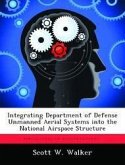Unmanned aircraft systems (UAS) are on the rise in the skies over today's battlefield. Their use, once isolated to surveillance and reconnaissance, has expanded to air interdiction, targeting, communications relay, base and convoy security, and even close air support. Unfortunately, the services have not planned well for this expansion of roles and numbers of platforms in the congested airspace over the battlefield. Traditional means of separating traffic, using airspace control measures, do not optimize use of the limited airspace, and are not sufficient to preclude mid-air collisions. The services are proposing several technology-driven initiatives to increase situation awareness for battlefield commanders, UAS operators, and TAGS airspace management personnel. This paper looks at three: the Army's Battle Command Network/Air Defense and Airspace Management initiatives in its Future Combat Systems BCT (FBCT); the Tactical UAV Coordinator Workstation (a UAV Battlelab / Army Space and Missile Command joint effort); and the AFRL Joint Airspace Management and Deconfliction (JASMAD) program. All three of these efforts use new technologies to allow better interoperability between A2C2 and TAGS, enabling quicker airspace deconfliction for more responsive UAS taskings and safer interoperability with manned assets and ground fires. This paper proposes ways to use and improve upon these three efforts. Their use in the present command and control structure can be optimized to promote centralized control and decentralized execution. This paper satisfies research requests proposed by the Chief of Staff of the Air Force on UAS deconfliction, as well as the Institute for National Security Studies in two areas: UAS proliferation in the battlespace, and the growing number of service-specific UAS.
Bitte wählen Sie Ihr Anliegen aus.
Rechnungen
Retourenschein anfordern
Bestellstatus
Storno








